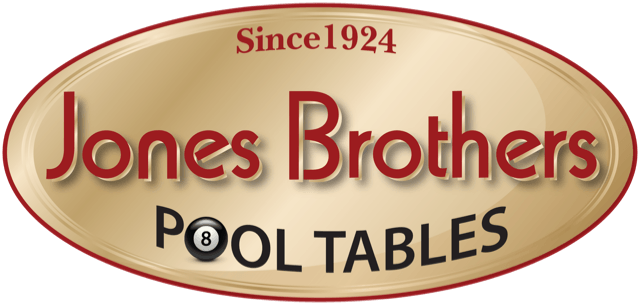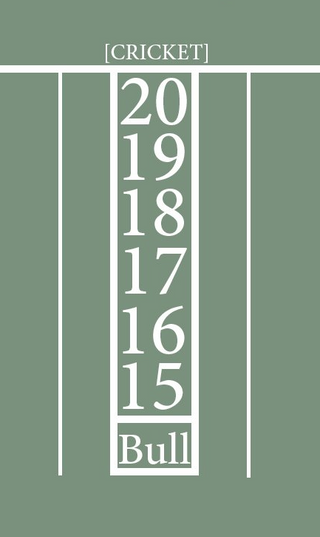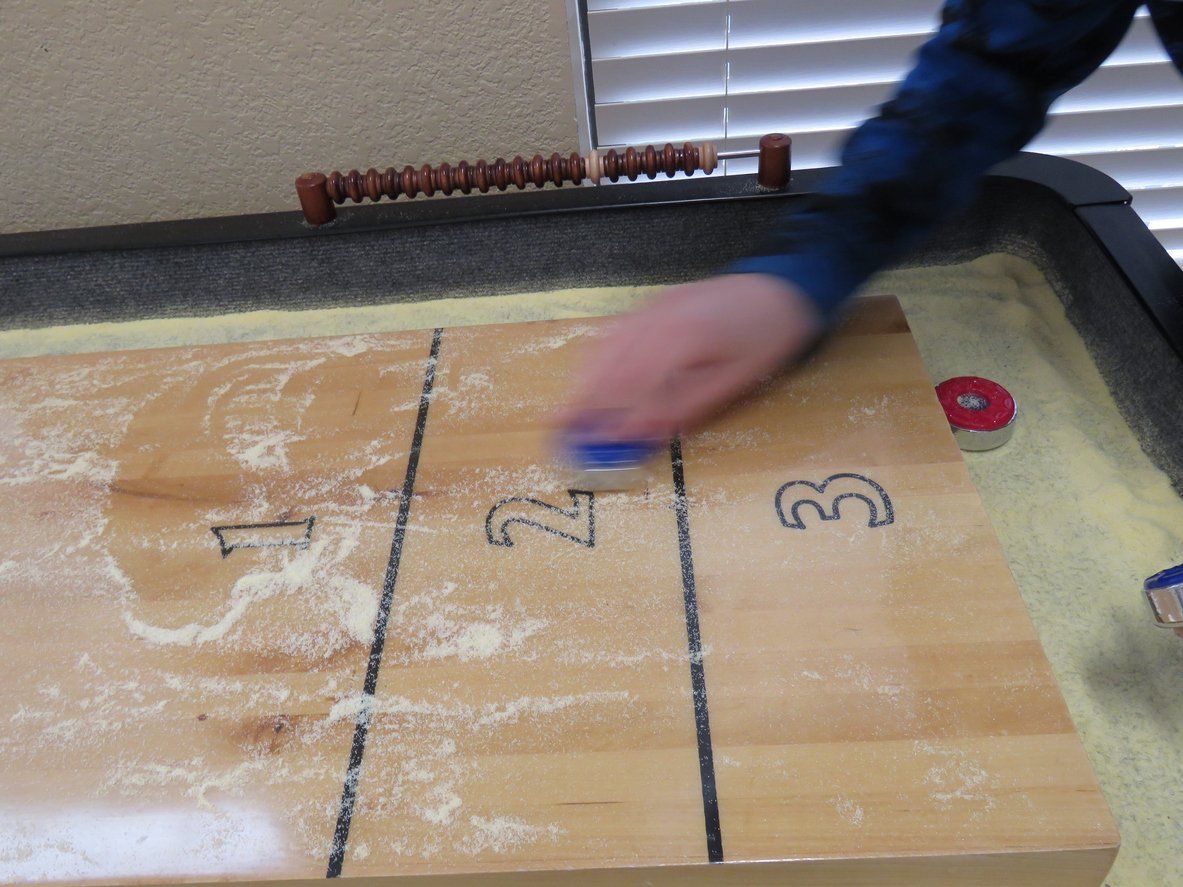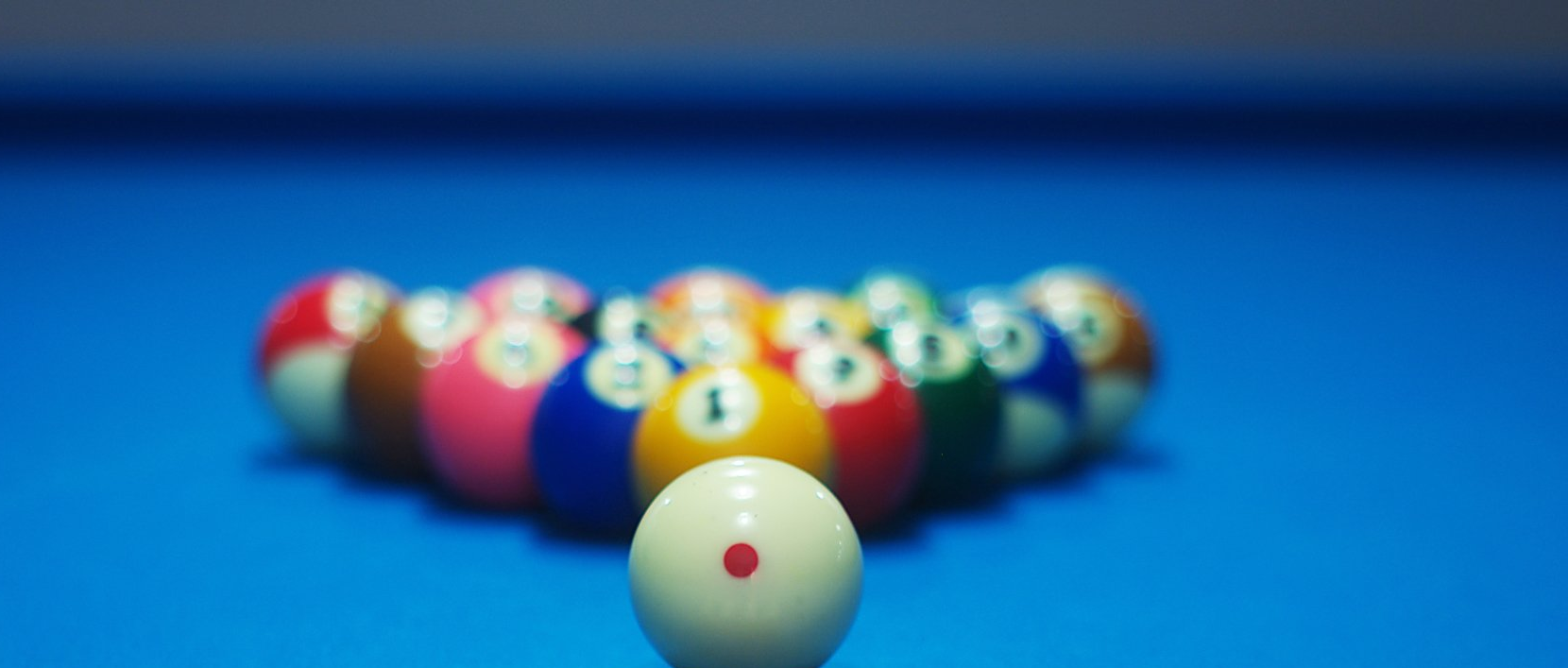Blog Layout
Darts: Setup and How To's
Feb 20, 2020
Learning the Game of Darts
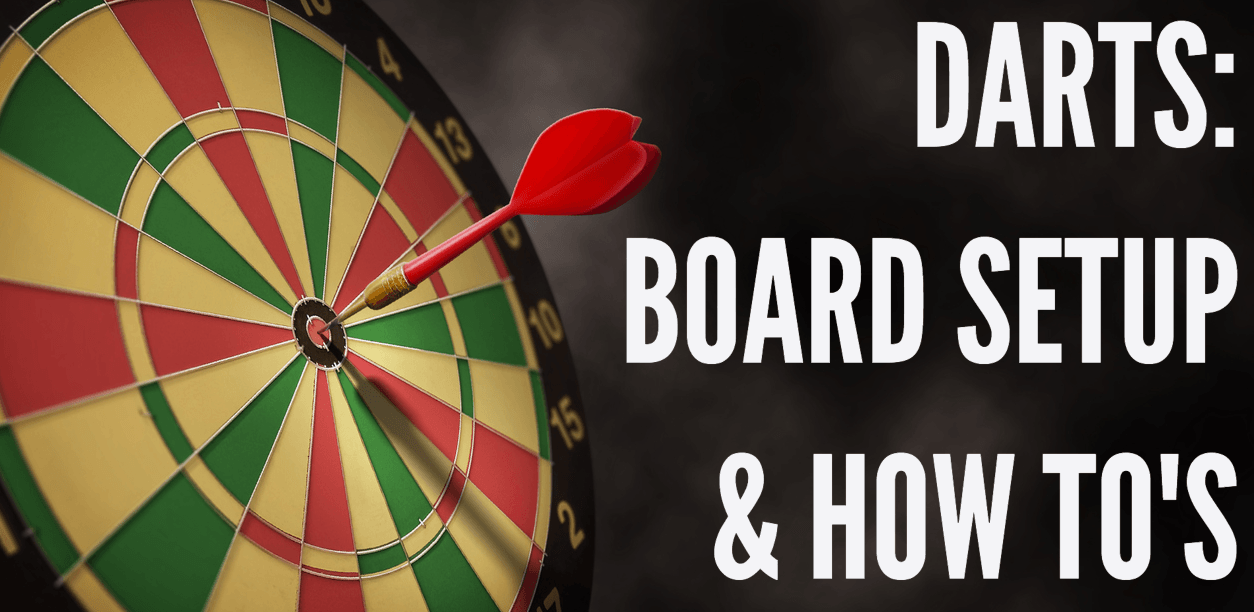
The game of darts is a sport that can be enjoyed by everyone regardless of age or gender, and it's becoming more and more popular. People play for fun while others take this sport very seriously...very, very seriously. We have gathered up a few facts about how to set up your new dartboard and other how to's like how to play, how to throw, etc.
About the Dartboard and Dartboard Setup for Both Standard & Wheelchair
The most common dartboard today is the "clock", "trebles" or "standard" dartboard. The pattern on the board is divided by wire and different colored spaces. It consists of a circle of 20 segments that are numbered from 1 to 20 in what seems to be a "random" order. At the center of the board is a small black circle called the "bullseye" and the bullseye is counted as a single point (as in the points are not doubled or tripled). Inside of the bullseye is a thin red ring called the 25 ring, and this is scored as a double or 2 times the points. The segments spread out from this ring broken only by the "triple" ring about half way to the edge and "double" ring which marks the rim of the circle. If you hit a number in the double ring, you get two marks, or, double points, and if you hit a number in the triple ring, you get 3 marks, or triple the points.
One of the most common questions when it comes to the game of darts is "What height and distance to the oche (the line that the dart thrower stands behind) should a dartboard be?" Well, the set-up can vary for example the Standard Dartboard, Yorkshire Dartboard, the Fives Dartboard, and the smaller Manchester Dartboard all have differing rules and regs. These dartboards can have either different board height or oche throwing distances. The most common Standard Dartboard distance is 7' 9 1/4" with the height of the board placement being 5' 8" from the bullseye to the ground. For the wheelchair oche distance that actually remains the same, but the height from the center of the bullseye to the ground will be 4' 6".
A Few Dart Games and How to Play
Standard #01 Game
About the game:
The 01 series are popular dart games and are all essentially the same, with the exception that you begin with a different number of points depending on the number of people you are playing with. You begin with 301 points (or 501/701/801/etc.) and the objective of the game is to get to zero points the quickest.
Starting the game: The order of play is normally either determined by a toss of a coin or by each player throwing for the centre bull the nearest being the player that throws first. When throwing for the bullseye, if the first thrower hits the center bullseye or outer bullseye the dart is usually removed before the second player throws. If the second player hits the same as the first player then the process starts again. If the first player's dart does not hit either the center bullseye or outer bullseye, then the dart remains in the board until the second player throws. If the first player's dart is obstructing the bullseye the second player may request to straighten the dart.
Scoring and playing the game: A throw consists three darts except were the game is finished in less throws. Darts cannot be re-thrown...duh. This includes darts that miss the board and darts that bounce of the board wiring system. Only darts that have their points touching the scoring area of the board will be scored. You must hit a double to begin scoring (well actually to begin subtracting points) and a double to win. The goal is to hit the largest numbers in order to win quickly. But there is a hitch: if you are shooting for an out (an end to the game), and you throw your exact score, you have to start over...yes from the beginning. Also, when shooting for an out, if you shoot a number higher than your current score, you go bust. Because of those two rules, the end can be tricky. Bullseye scores 50, the outer ring scores 25 and a dart in the double or triple ring counts double or triple the segment score.
Variations (yep, we have those): Depending on who you are playing with, variations can include not having to “double in” or “double out.” Doubling out is almost always a requirement, but doubling in is optional. Also, some won't pull the "go back to the beginning" rule or the "bust" rule when playing
Cricket (no not that kind of cricket)
About the game: There are few dart games that are played that are based around other games, and Cricket is the most common of them.
Starting the game: This is a game for 2 players or 2 teams (normally). To start, players toss a coin to decide who goes first, or both players throw a dart at the bull’s-eye and whoever is closest starts. You will need a score chart that is set up with the numbers 15 – 20 and the bullseye.
Scoring and playing the game: Each player or team will take turns throwing. Three dart throws is a turn. The object of the game is to throw at the numbers 15-20 and the bullseye in order to "close" each number before your opponent and score the most points. That means you need to hit each number three times, or hit a double and a single, or hit a triple in order to close a number. Numbers can be 'owned' or 'closed' in any order by the player/team. If the number is not closed out by the other player/team, the player that has it closed can now score points on that number. If both players/teams hit the number 3 times the number is closed and can no longer be scored on. Bullseyes can be closed by hitting either the single outer ring or the inner double ring a total of 3 times. Bullseyes score 25 for the single and 50 for the double. If a number is closed and the player/team that has it closed hits a triple or a double, it will triple or double the value of the zone. Points are added throughout the game as they are scored.
Winning the game: There are a few ways to win this game:
1. The player/team that closes all numbers first and has the most points, wins.
2. If both sides are tie with points, or have no points at all, the first player or team to close all of the numbers will win.
3. If a player or team closes all of the numbers first, but they are behind in points, they must continue to score on any of the numbers that are not closed until either the point deficit is made up, or the opponent has closed all innings.

17 Mar, 2020
As we all know, we may be stuck in our homes for just a bit, which could get pretty boring! There is only some much AMI work you can do, TV/YouTube you can watch, and video games you can play. Have you thought about getting something new to entertaining you and your family? Here at Jones Brothers Pool Tables, we have a few solutions to conquer the boredom.
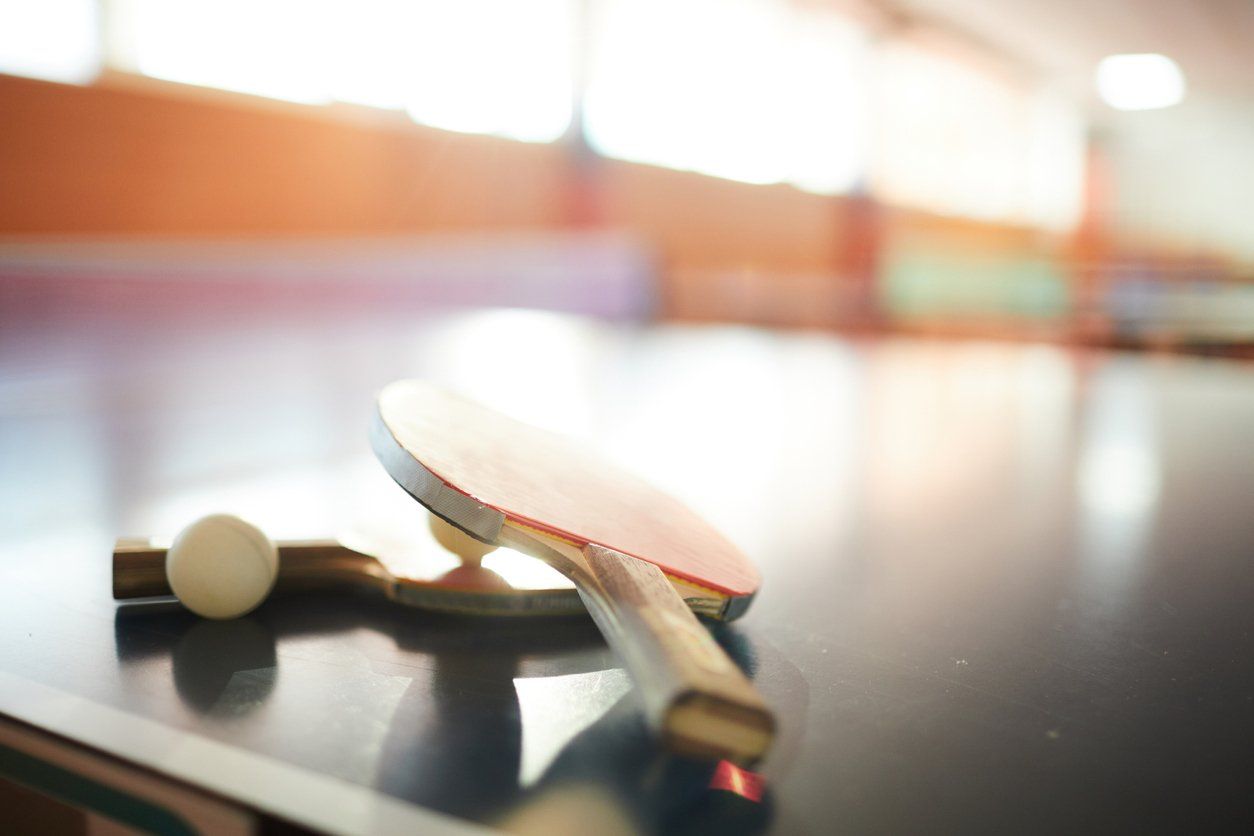
24 Jan, 2020
FACTS: Table-tennis or, yes, ping-pong is indeed a sport (most people don't know that). Thi s sport is for EVERYONE! It can be played for someone's whole life! You can be male or female, young or old, disabled or able-bodied and can compete against each other. No matter if you're 18 months old or 100, you can still master this game! It is the third largest participation sport in the world right after soccer and cricket. The best player in history is Sweden (nope, not Chinese...GASP). His name is Jan-Ove Waldner or “The Mozart of Table Tennis” as he is known in this sport. Before his retirement in 2016, he had won 16 World Championships medals AND a gold and silver medals in the Olympics. HISTORY: The game as we know it started in England in the 1800's. The creators tried to mimic the popular lawn tennis for the indoors. We would say that they succeeded. Names such as Ping-Pong, Indoor Tennis, & Gossima were originally trademarked names form the earliest manufactures all for the same game, table tennis. In the 1920's, owners of the "Ping-Pong" name actually threatened legal action for anyone using that name without using their equipment. This is around the time that "Table Tennis" became the official name of the sport. HEALTHY BENEFITS: It puts less stress on the joints if played recreationally and provides some with needed exercise. Table-tennis has been shown to activate more parts of the brain than any other sport. Doctors recommend table-tennis to the elderly to help battle mental diseases such as Alzheimer’s & dementia. Exercise keeps the body young and table-tennis is an excellent way to keep the brain young. Don't believe us? Check out this story from ABC News: This is Your Brain on Ping Pong Playing table tennis improves hand-eye coordination. Playing stimulates mental alertness, concentration and tactical strategy as well. This makes it the perfect game for young people to sharpen reflexes, and for older people to refine tactics. Considering the fact that the sport is entertaining and can be fast paced, it can be a fun and easy way to burn calories. As with any sport, this is a great opportunity to meet new people and make new friends which is great for your mental health. RANDOM FACTS: There is an actual Governing Body & Constitution of Table Tennis called the International Table Tennis Federation (ITTF)...It's not as scary as it sounds we hope! The rules have mostly remained the same for over 100 years. Ping Pong reunited China with the world! In 1971, China invited the USA, Canada, England & Columbia to play a friendly ping pong tournament. This was after China had not spoken to these countries in over 6 years. This tournament became known at the Ping Pong Diplomacy. After this, political relations between the US & China started to soften up a bit and in 1972, President Richard Nixon visited China in order to develop collaboration between the two countries. China has over 100 million table tennis players with 40,000 of those being pros. Table tennis was banned in the Soviet Union from around 1930 to 1950. They believed that the sport was harmful to the eyes.
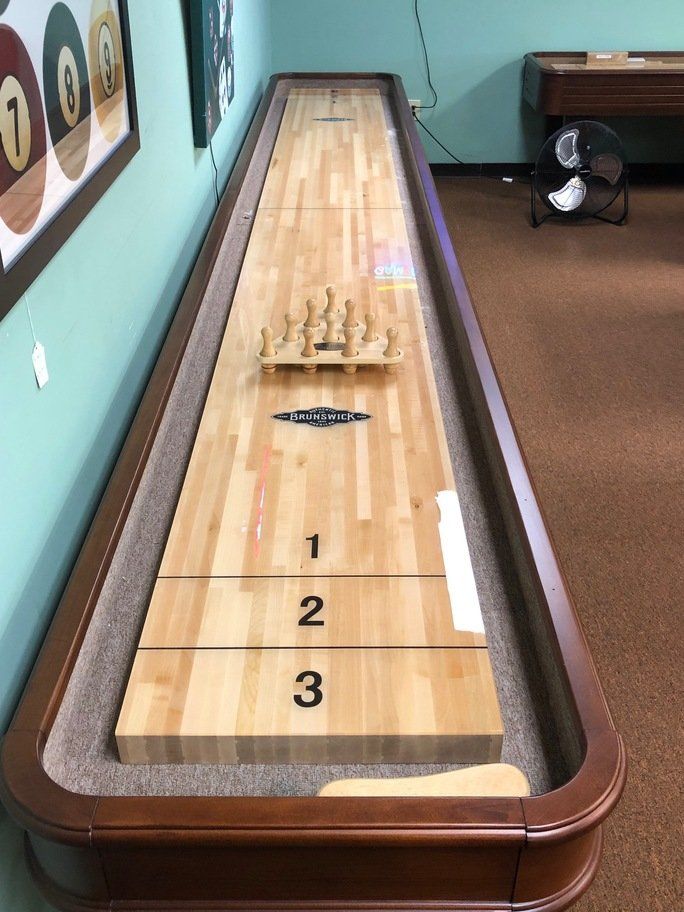
20 Sep, 2019
Shuffleboard is a unique game for all ages that dates back over 500 years. If you can stand or even sit at the end of a shuffleboard table, you can glide the pucks down the table. Shuffleboard has made a strong, steady climb back over the last decade with few changes. The gaining of its popularity is due to the fact that is easy to learn and easy to play. If you are ready to start playing or just want to learn more about the game, check out a few facts about this game below. WHAT YOU NEED To play shuffleboard, the major things that you need are: Shuffleboard table - Come by Jones Brothers and we'll help you find the perfect table! Set of pucks Scoring Beads - A scoring bead is designed like an abacus. It is a means of scoring in table shuffleboard. Bowling Pins - This gives players different options of playing the game. HOW TO PLAY The first player slides his/her first puck to the other end of the board trying to make in to one of the numbers blocks labeled "1, 2, or 3". Then his/her opponent shoots his/her own puck with an attempt to knock off the first player's puck. It might also be to shoot their punk further down the board than their opponent. The choice depends on the skill and the instinct of the player. Both players continue to shoot their pucks in an alternating turn until all the pucks have been shuffled (played). This makes it a single round. The player whose puck moves furthest down the board is the winner, and they collect the number of points that correspond with the number block that their punk in on. The game can be played by two people (single) and also by four people (double). TIPS P lacement of your puck is crucial. This is a skill that needs constant practice. It is important to place your puck at the far end of the board without it falling out of the large framed triangle at the end of the court. B e offensive minded: As you learn how to play shuffleboard, try to knock off your opponent’s highest scoring pucks to prevent them from scoring. Be defensive minded. You have to place many of your pucks in front of your highest scoring puck so that your opponent will not be able to knock you off or score. FACTS SIZE OF THE BOARD Shuffleboard tables range in size from 9 to 22 feet in length, 16 to 20 inches in width and the thickness of the board ranges from 1.5 inches to 3 inches. The most common tables are between 12' to 16' in length. Just remember when purchasing a shuffleboard table you will need to leave space in your room to have at least 2 feet on each end for players to shoot. This means if you were buying a 14' table you will need a space of at least 18' to make it easier to play. SHUFFLEBOARD "SAND" Shuffleboard "sand" is not sand at all! Shuffleboard wax, also known as sand or salt, is a what is sprinkled on table to decrease friction between the puck and the table. It also helps to preserve the tables thickness, and increase the speed of weights as they glide across the table. It is one of the most essential accessories you need to play table shuffleboard. SHUFFLEBOARD TABLES ARE NOT FLAT You read that right! Shuffleboard tables are usually concave meaning that the table bows down slightly in the center. This helps keep the pucks on the table instead of flying off. SHUFFLEBOARD PLACEMENT You want to keep your shuffleboard table away from windows because of the inconsistencies in the daily changes in temperature and sun exposure. The sun will dry out your table's surface and can even bow your table.
STORE HOURS:
Monday thru Friday 8:30am to 5:30pm
Saturday 10am to 4pm
Closed on Sundays
© 2024
All Rights Reserved | Jones Brothers Pool Tables
Powered by
Flypaper | Privacy Policy
